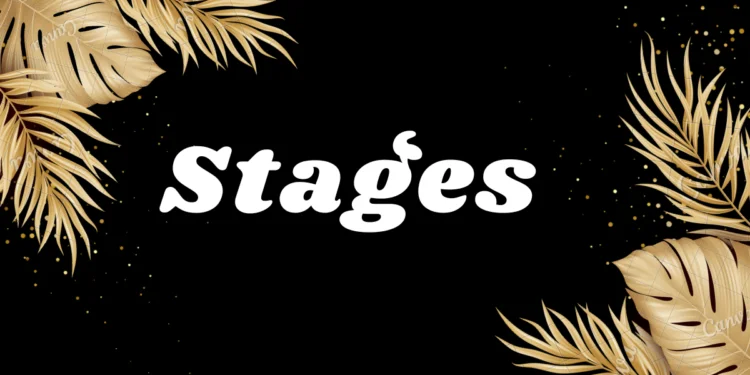Introduction
The voyage of human existence unfolds thru distinct degrees, a story woven with the threads of physical, cognitive, emotional, and social improvement. These levels, collectively known as the Four staģes of Human Development, encapsulate the difficult and transformative adventure from infancy to vintage age. Each level brings its unique set of challenges, opportunities, and milestones, shaping the essence of our life. In this exploration, we embark on an odyssey through those ranges, deciphering the psychological intricacies, emotional landscapes, and societal dynamics that outline the diverse chapters of the human enjoy. Join us as we unravel the tapestry of life, wherein vulnerability transforms into resilience, interest blossoms into understanding, and the ebb and float of lifestyles create a mosaic of increase and self-discovery. Welcome to the exploration of the Four staģes of Human Development – a voyage thru the quintessence of lifestyles itself.
Staģes 1: Infancy (0-2 years)
The first staģes of human improvement is infancy, a length marked by speedy bodily and cognitive growth. Infants input the sector totally dependent on caregivers for survival, relying on their fundamental instincts and reflexes. This degree is crucial for the formation of early attachments, as babies start to bond with their number one caregivers, commonly dad and mom or guardians.
During infancy, motor capabilities broaden rapidly, from the basic reflexes gift at beginning to the sluggish mastery of movements together with crawling, standing, and eventually taking walks. The cognitive improvement is similarly fantastic, with toddlers beginning to explore their surroundings, recognize acquainted faces, and draw close easy principles.
Emotionally, babies specific their needs and feelings thru cries, smiles, and different non-verbal cues. Caregivers play a pivotal role in meeting those emotional needs, fostering a feel of protection and believe. The high-quality of early attachments may have lasting effects on an character’s emotional well-being and relationships in later lifestyles.
Staģes 2: Childhood (3-12 years)
Childhood marks the second one degree of human development, characterized by huge physical, cognitive, and social advancements. This length is regularly divided into early youth (three-6 years) and center formative years (7-12 years).
In early youth, children maintain to refine their motor talents and experience speedy language improvement. They input the arena of imagination, engaging in pretend play and forming their first friendships. Cognitive skills expand as youngsters collect language competencies, increase primary problem-fixing competencies, and lay the foundation for more complex wondering.
Middle formative years sees in addition refinement of cognitive talents, with children turning into extra adept at logical reasoning and essential thinking. Formal education starts offevolved, supplying a structured surroundings for studying and social interaction. This degree is critical for the improvement of a feel of competence and vanity as youngsters navigate academic demanding situations and social relationships.
Socially, youngsters begin to discover their identification within the context of own family, peer companies, and broader societal affects. Friendships end up more significant, and kids begin to recognize societal norms and values. The reports and relationships shaped during formative years make contributions to the development of social abilties and interpersonal dynamics.
Staģes 3: Adolescence (13-19 years)
Adolescence is a tumultuous but transformative degree, regularly characterised through the onset of puberty, exploration of identification, and elevated autonomy. This level spans the teenage years and is marked by using extensive bodily, emotional, and cognitive modifications.
Physically, young people go through speedy increase spurts, hormonal changes, and the improvement of secondary sexual characteristics. These adjustments contribute to a heightened recognition of body picture and self-perception. Cognitive competencies maintain to evolve, with children demonstrating advanced reasoning abilties, abstract wondering, and the capability to plot for the destiny.
Emotionally, young people grapple with the search for identification and a sense of belonging. Peer relationships grow to be extra complicated, and people try to establish their independence from their circle of relatives of origin. This level frequently entails experimentation and exploration, as kids navigate diverse social roles and identities.
The improvement of a sturdy feel of self and identification for the duration of childhood lays the foundation for future relationships and career alternatives. Challenges which include peer stress, identification crises, and academic stress are not unusual, making this staģes a vital length for emotional resilience and self-discovery.
Staģes 4: Adulthood (20 years and beyond)
Adulthood encompasses the longest and most numerous degree of human development, spanning from early adulthood via center age to late maturity. Each segment inside maturity affords specific challenges and possibilities, contributing to the complexity and richness of the human enjoy.
Early adulthood (20-40 years) is marked via the pursuit of independence, profession improvement, and the formation of intimate relationships. Individuals often set up their personal households, pursue higher schooling or career paths, and navigate the complexities of romantic partnerships. This degree is crucial for identity consolidation and the status quo of a sense of cause.
Middle maturity (forty one-60 years) is characterized with the aid of balance in career and relationships. Individuals may additionally revel in the challenges of the midlife disaster, in which they reevaluate existence desires and achievements. This length often involves the balancing of own family duties, profession aspirations, and personal fulfillment.
Late maturity (61 years and past) brings unique challenges related to getting older. Physical skills may additionally decline, and people may additionally face health-associated troubles. However, this level also offers possibilities for mirrored image, wisdom, and the ability for significant contributions to own family and society. Maintaining social connections and engaging in activities that carry pleasure and achievement grow to be essential aspects of overdue adulthood.
Conclusion
In the culmination of our adventure thru the Four staģes of Human Development, we discover ourselves at the crossroads of mirrored image and anticipation. The elaborate tapestry of life that we’ve got unraveled reveals the profound interconnectedness of our stories, the resilience of the human spirit, and the regular dance among continuity and exchange. From the delicate beginnings of infancy, in which the rules of consider and attachment are laid, to the vibrant exploration of adolescence, marked by using boundless curiosity and the forging of early social bonds, the journey unfolds. Adolescence emerges as a period of self-discovery, wherein identification takes middle level amid the tumultuous waves of physical and emotional transformations.
As we step into maturity, the landscape broadens, encompassing the pursuit of intimacy, the quest for purpose, and the inevitable confrontation with the passage of time. Each degree consists of its specific set of challenges and opportunities, contributing to the mosaic of a lifestyles fully lived.










